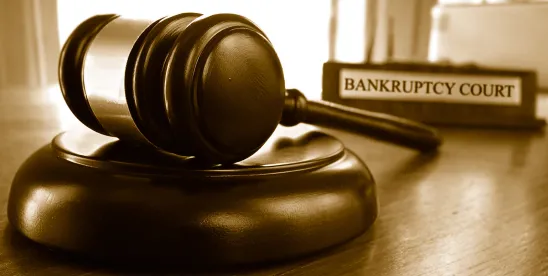The automatic stay is one of the most powerful protections available to debtors in bankruptcy, immediately halting most collection efforts, foreclosures, and lawsuits. This mechanism provides the debtor with breathing room to reorganize finances and prevents creditors from racing to recover assets.
However, creditors are not without options. They can challenge the stay through a motion for relief, which can lead to enabling them to proceed with foreclosure, repossession, litigation, or other action under certain conditions. Understanding the nuances of this process is crucial for legal and financial professionals working in bankruptcy law.
Understanding the Automatic Stay
The automatic stay takes effect immediately upon the filing of a bankruptcy petition under Section 362(a) of the US Bankruptcy Code. It serves several key functions:
- Halting litigation against the debtor
- Preventing asset repossession and foreclosure
- Stopping debt collection efforts, including garnishments
- Maintaining the status quo while the debtor works toward financial rehabilitation
As Matt Christensen of Johnson May explains, the automatic stay applies without any need for a separate court order, meaning that creditors must cease collection efforts as soon as they become aware of the filing. Courts take violations of the stay seriously, and creditors who ignore it risk facing sanctions or penalties.
Grounds for Lifting the Automatic Stay
Creditors may seek to lift the automatic stay under Section 362(d) of the Bankruptcy Code. The most common justifications include:
1. ‘For Cause,’ Including Lack of Adequate Protection
One of the strongest arguments for lifting the stay is that a secured creditor’s interests are not adequately protected. This is especially relevant when a secured asset (such as real estate or equipment) is losing value and the debtor is not making payments or maintaining insurance.
Tim Anzenberger of Adams and Reese noted that creditors should provide evidence, such as declining property values or unpaid property taxes, to demonstrate that the value of their collateral is at risk. Inadequate protection can be grounds for relief, as courts aim to ensure that secured creditors do not suffer undue losses while the bankruptcy case proceeds.
2. ‘Lack of Equity’ and ‘Non-Essential’ to Reorganization
If a debtor owes more money to a secured creditor whose collateral is worth less than the amount of the debt (i.e., the debtor lacks equity in the collateral), and the asset is not necessary for reorganization, the stay can be lifted to allow the creditor to recover the collateral.The court will weigh whether the asset is essential for the debtor’s long-term viability before deciding on stay relief on this basis.
For example, Ryan Hardy, a partner with Levenfeld Pearlstein, explains that, in the case of a failing business, non-essential equipment or real estate might be subject to foreclosure, especially if liquidation is the likely outcome.
3. Single Asset Real Estate Cases
In single asset real estate (SARE) cases, a special provision applies. If the debtor does not file a reorganization plan or make payments within 90 days, the creditor may automatically seek stay relief. This prevents debtors from using bankruptcy as a mere delay tactic without a legitimate plan for restructuring.
4. Bad Faith Filings
Courts scrutinize bankruptcy cases to prevent abuse of the system. If a debtor files for bankruptcy solely to delay a foreclosure or to frustrate creditors without a valid reorganization plan, the court may find bad faith and lift the stay.
Maria Carr of McDonald Hopkins highlights that repeated filings right before a foreclosure sale are often viewed as a red flag. Creditors can present a history of past filings and delays to demonstrate that the debtor is acting in bad faith, strengthening their case for stay relief.
Procedure for Filing a Motion To Lift the Stay
A motion for relief from the stay follows a structured legal process:
- Filing the Motion – The creditor submits a written motion explaining why relief is warranted, citing legal grounds and supporting evidence.
- Notice to Interested Parties – The debtor and other affected parties must be formally notified.
- Court Hearing – If the debtor objects, a hearing is scheduled where both sides present arguments.
- Court Ruling – The judge decides whether to lift, modify, or keep the stay in place.
A contested motion often requires valuation evidence, financial projections, and expert testimony from appraisers or financial analysts.
Conclusion
The automatic stay is a critical component of bankruptcy law, preventing immediate collection actions. Understanding how courts evaluate lift stay motions is essential for attorneys, creditors, and financial professionals involved in bankruptcy litigation. Courts carefully balance debtor protections and creditor rights, weighing the evidence presented.
Filing a motion for relief requires a strategic approach, including valuation analysis and legal justification. By knowing the rules, legal strategies, and key arguments, parties can better protect their interests in Chapter 11 and other bankruptcy cases.
To learn more about this topic, view the webinar The Nuts & Bolts of Chapter 11 (Series I) / The Nuts & Bolts of a Lift Stay Motion. The quoted remarks referenced in this article were made either during this webinar or shortly thereafter during post-webinar interviews with the panelists. Readers may also be interested in reading other articles about Chapter 11.
This article was originally published here.
©2025. DailyDACTM, LLC. This article is subject to the disclaimers found here.




 />i
/>i
